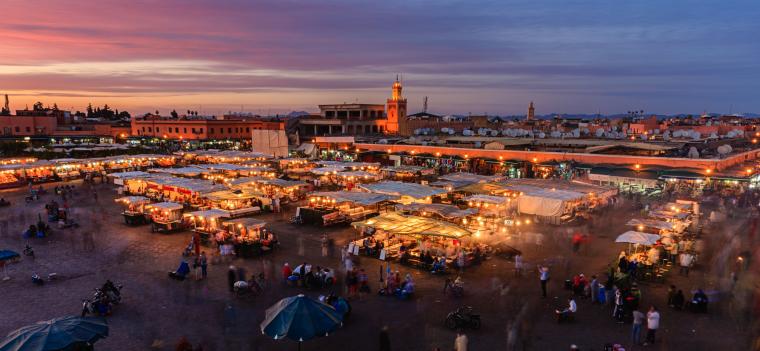News
- Pressure for reform in Morocco intensified when subsidies reached over 6% of GDP
- Government launched the first phase of a three-year reform process in 2012, an incremental approach to reform that ensured a smooth transition
- Integrated communication strategies and incremental price increases helped maintain public acceptance
Morocco has a long history of energy and other subsidies dating back to the 1930s. Their original purpose was to protect vulnerable population groups and to promote domestic industries. By 2007-2008 however, the negative effects of the subsidies system were becoming apparent. The rising fiscal pressure was out of the government’s control. Food and energy subsidies reached 6.5% of GDP by 2012, with the bulk (70%) going to energy products.
It was clear that the subsidy system was no longer achieving its intended objectives. The poor were benefiting less and some economic sectors were becoming inefficient. As much as 75% of energy subsidies were going to the richest 20% of the population. Arrears in government subsidies payments to refined oil importers and suppliers ballooned to US$ 2 billion, threatening to constrain the supply of fuel and gas to the country.
A three-year phased pricing reform
Launched in June 2012, a phased reform was introduced over three years until full price liberalization: a preparation phase, partial fuel price indexation, and price liberalization. The preparation phase included identifying population groups who would be affected, surveying households and businesses, and designing impact mitigation strategies. A large communication campaign was also launched to start building public acceptance.
In 2013, the government introduced a partial fuel price indexation mechanism for diesel, gasoline, and industrial fuel oil. Indexation was based on a moving average of the previous two months’ prices and entailed automatic adjustment of domestic prices when the difference between the market reference price and the domestic retail price exceeded 2.5%.
This was followed by a removal of subsidies for gasoline and industrial fuel oil, then the fuel subsidy for power generation. The government also introduced quarterly price increases to reduce the unit‐subsidy for diesel and eliminated diesel subsidies by the end of 2014. In December 2014, the government signed an agreement with petroleum product suppliers. This paved the way for a transitional period in 2015, during which prices would be announced by the government twice a month. The government implemented the policy as agreed, and deregulated prices at the end of 2015.
Public acceptance and social protection
Public opinion can often make or break an energy subsidy reform process. An incremental approach to increasing prices helped ensure a smoother transition and better level of acceptance. Teams working on technical aspects of reform did not work in isolation, but in close cooperation with government teams ensuring suitable communication.
The government took parallel measures to expand existing targeted social protection programs. This included support to school‐age children and medical assistance for the poor. It also introduced new social protection programs in support of low‐income widows and the physically disabled. Support was also provided for public transport to compensate for the cost of higher fuel prices and to limit fare increases.
World Bank support
The World Bank supported the reform process through its expertise and international experiences. Study tours in Indonesia and several Latin American countries helped key officials to study cash transfer systems for example.
ESMAP-funded reports and projects in 2007-2008 helped to analyse the picture of energy subsidies and prepare the ground for the government’s reform. One report showed that high-income groups were benefitting most from LPG subsidies and recommended finding an alternative way of securing social protection for lowest income groups. Another report identified possible areas in the oil products markets where competition could be improved, with the aim of impacting cost of supply. A third project helped to define key steps to implement a new energy efficiency agency.
Measuring success
The 2013 and 2014 reforms have been very effective in reducing the budget deficit while protecting the most vulnerable parts of the population. Subsidies were eliminated first on those products that were more pro-rich and affected poverty the least like gasoline, while the reform of products that would hurt the poor the most, like LPG, has been delayed.
Morocco has also proven to be a good example of how frequent and gradual price adjustments help gain acceptance of consumers, who progressively grow accustomed to internal prices fluctuating with world fuel prices and exchange rates. The country’s experience also shows that clear communication regarding these price changes can help to ensure that the pricing reform is sustained.
Mr. Hassan Bousselmame is the Director of Pricing, Competition and Investment, Ministry of General Affairs and Governance, Morocco. He presented the process of energy subsidy reform in Morocco for an audience of Egyptian government officials at the webinar “Morocco: Fuel and electricity price indexation – operationalizing and building public acceptance”. Held in June 2017, this knowledge-exchange event was organized within the framework of the World Bank’s Energy Subsidy Reform Online Community (ESROC).
ESROC is a members-only virtual community aiming to share knowledge among key stakeholders to facilitate energy subsidy reforms worldwide. It brings together government officials from around the world and experts from the World Bank Group interested in reforming energy subsidies. The community is a safe space for frank discussion (Chatham House rule applies), networking among peers, and exchanging knowledge and experiences to overcome the challenges of energy subsidy reform. ESROC is run by the Energy Sector Management Assistance Program (ESMAP).
